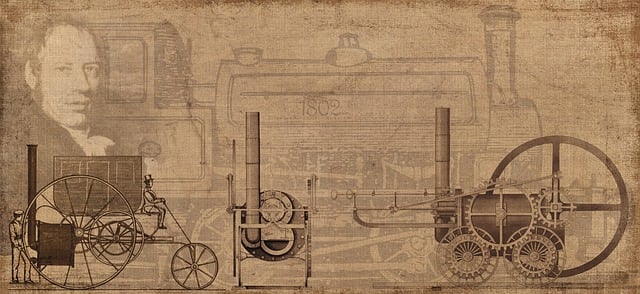Understanding the UK's patent landscape is crucial for inventors, with the IPO as the primary administrator. Translation services for UK patents and patent applications are vital for non-native English speakers to navigate this legal framework effectively. These services ensure accurate communication of technical details in the native language, fostering inclusivity within the UK's robust patent system. By adhering to stringent best practices, employing qualified specialists, and utilizing advanced tools like translation memory, top-tier translations safeguard intellectual property rights and avoid legal issues, facilitating global protection of innovative ideas efficiently.
Are your UK patents localized for legal standards? In today’s global market, ensuring that patent applications meet local requirements is crucial. This article explores the intricate landscape of UK patent laws and the vital role of translation services in facilitating international protection. We delve into best practices to maintain accuracy and compliance, while addressing challenges specific to technical documents. Discover strategies for effective communication, making your patent applications stand out in a bustling legal arena. Learn how translation services can be a game-changer for your global intellectual property pursuits.
- Understanding the Legal Landscape: UK Patent Requirements
- The Role of Translation in Patent Protection
- Ensuring Accuracy and Compliance: Best Practices for Translation Services
- Challenges in Translating Technical Documents for Patents
- Strategies for Effective Communication: Localized Patent Applications
Understanding the Legal Landscape: UK Patent Requirements

Understanding the Legal Landscape: UK Patent Requirements
The United Kingdom, with its robust legal system, has specific guidelines for patent applications. For those seeking to protect their inventions within the UK or through European Patent Office (EPO) procedures, understanding these requirements is paramount. Patents in the UK are granted and administered by the Intellectual Property Office (IPO), which ensures compliance with local laws and regulations. One critical aspect often overlooked is localization, especially for non-native English speakers. While the IPO accepts patent applications in English, incorporating translation services for UK patents and patent applications can significantly enhance the accuracy and validity of the documentation.
Translation plays a vital role in ensuring that all technical details, claims, and specifications are clearly conveyed in the native language for UK courts and officials to comprehend effectively. This becomes increasingly important as global innovation expands, fostering an inclusive environment where inventors from diverse linguistic backgrounds can protect their intellectual property rights seamlessly within the UK legal framework.
The Role of Translation in Patent Protection

In the realm of intellectual property, patent protection is a global game-changer. When it comes to the UK, ensuring your patents are localized for legal standards is paramount. This involves a meticulous process that starts with translation services for UK patents and patent applications. Accurate and specialized translation is more than just converting words from one language to another; it’s about conveying complex technical concepts while adhering to legal nuances.
Professional translation services play a crucial role in protecting your innovations, ensuring that every detail, from claims to descriptions, is accurately represented in the target language. This precision is essential for navigating the UK patent system and establishing a robust defense against potential infringements. In today’s digital era, where patents often span multiple languages, high-quality translation services are indispensable tools for inventors and patent attorneys alike.
Ensuring Accuracy and Compliance: Best Practices for Translation Services

Ensuring accuracy and compliance in the translation of UK patents and patent applications is paramount to protect intellectual property rights and avoid legal pitfalls. Translation services should adhere to strict best practices, including employing qualified translators with expertise in both the target language and technical fields relevant to the patent content. This specialized knowledge ensures that complex terminology and nuances are accurately conveyed, preserving the original intent and meaning.
Additionally, translation memory (TM) systems and term bases should be utilized to maintain consistency across documents. These tools help prevent errors, guarantee terms are translated uniformly, and speed up the overall translation process. Furthermore, rigorous quality assurance checks, including proofreading by a separate expert, are essential to catch any discrepancies before final submission. Compliance with industry standards and legal requirements ensures that translated patent documentation stands up to scrutiny, facilitating efficient global protection of innovative ideas.
Challenges in Translating Technical Documents for Patents

The process of translating technical documents for patent applications presents unique challenges due to the highly specialized nature of patent language and terminology. Accurate translations are crucial to ensure that the essence of an invention is conveyed correctly across different languages, preserving the integrity of the original application. Technical terms often have specific meanings within a particular industry or field, making it imperative to use qualified translators familiar with both the subject matter and the target language.
When it comes to UK patents, ensuring compliance with legal standards adds another layer of complexity. Translation services for patent applications must not only be linguistically precise but also understand the nuances of British patent law and terminology. This requires a deep knowledge of regulatory frameworks and consistent application of terms to avoid any potential misinterpretation that could impact the validity or enforcement of a patent. Professional translation companies specializing in intellectual property often employ native speakers with relevant legal expertise to address these challenges effectively.
Strategies for Effective Communication: Localized Patent Applications

When it comes to protecting your innovative ideas in the UK, ensuring your patent applications are localized for legal standards is paramount. This involves more than just translating texts; it requires a strategic approach to effective communication. Engaging specialized translation services for UK patents becomes an indispensable tool. These services not only translate documents but also tailor them to align with local legal terminology and nuances.
Effective communication strategies involve understanding the UK’s patent laws and procedures, which can significantly vary from other jurisdictions. Professional translators who specialize in intellectual property law are crucial in this process. They ensure that technical terms are accurately translated, preserving the original intent and meaning. This meticulous approach guarantees that your patent applications are not only compliant with legal standards but also clearly convey your inventions’ intricacies to UK patent offices.
In ensuring robust patent protection, especially within the intricate legal framework of the UK, localisation of patent applications through professional translation services is paramount. Understanding the unique requirements and challenges associated with technical documents in this domain is crucial for success. By adopting best practices and strategies outlined in this article, inventors and businesses can navigate the complexities effectively, securing their intellectual property rights while adhering to stringent legal standards. Translation services specifically tailored for UK patents play a pivotal role in this process, ensuring clear communication and compliance throughout the application journey.
